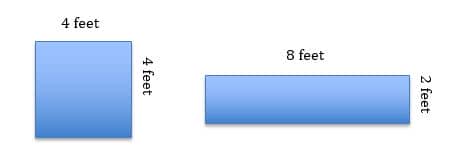Recommended type of Construction Contract
Having completed the design of the house, the next logical step would be to undertake construction.
For Construction of an individual house, one has to engage the services of a professional/s (contractor/s) who translates the design and drawings in to physical reality.
Most crucial decision that has to be made while constructing a house is, to decide on the model of ‘construction contract’ that has to be adopted for.
Few common types of construction contracts that are adopted and their pros and cons are:
1. Item rate contract:
Pros:
- Work to be executed as per specifications and drawings
- Responsibility of the quality of workman-ship and materials is that of a contractor
- Possibility of hiring reputed and established contractors is high
- Supply material and labor in the contractor’s scope
Cons:
- Contractor will have a mark-up of materials
Remarks:
- Basic price of the expensive materials such as cement and reinforcement steel shall be specified and any variations during the contract shall be reimbursed
- Also advisable to fix the basic cost of finishing materials
2. Material supply contract OR Labor contract:
Pros:
- Eliminates profit margin marked up on the materials
Cons:
- Client must have the time, infrastructure and patience to procure all the materials
- Limited control over wastage of materials
3. Cost per sft of construction:
Cons:
- Absence on the clarity on the basis of calculation of area to be measured
- Clarity on items of work that are included and excluded
- Clarity of price fluctuations during tenancy of the contract
The most common type of ‘contract’ that is adopted by most of the house owners is the‘cost/sft’ contract.
‘COST PER SQUARE FOOT’ CONTRACT IS THE MOST AMBIGUOUS CONTRACT TO GET INTO AND WHY IT SHOULD BE AVOIDED.
One should not enter into a ‘cost/sft’ contract unless the following questions are answered.
- What is the definition of ‘square foot’ measurement for payment?
- Is it the plinth area (includes wall thickness) or the carpet area (does not include wall thickness)?
- Does the plinth area include the balconies?
- What if there is a cutout in the slab? Is this included or not included?
- Is the ‘stair case room’ of the ‘lift machine room’ included in the area calculation?
Let me demonstrate to you through very fundamentals of geometry, fallacy in awarding a ‘cost per square foot contract’ without having an idea of shape and size of the proposed house for construction.
Consider a house built in the shape of a square of 4 feet sides.

- Area of a square of 4×4 feet sides= (4×4) =16 square feet and its perimeter is (4+4+4+4) = 16 feet.
- Area of a rectangle of 8×2 feet sides = (8×2) = 16 square feet and its perimeter is (8+2+8+2) = 20 feet
From the above, you will observe that, irrespective of the shape of the house, for the same area of 16 square feet, the perimeter (read wall) of a square house is 25% lessthan the house that is a rectangle. That means, the square house has less wall area to be built as against a rectangular house. In the rectangular house, the walls being 25% longer, quantities of all the connected works such as plaster, paint etc., increase by 25%.
As a consequence, for the same area of construction, 16 sft, the rectangular house ismore expensive than the square house, for exactly same specifications.
Finally, you will also observe that nowhere is floor-to-floor height is mentioned in the ‘cost per square foot’ concept of contract. Needless to say, a house whose roof height is 9.5 feet is less expensive than a house having a roof height of 10 feet.
SCOPE OF WORK:
Is the scope of work well defined?
- Which are the items of work that are included in the ‘cost per square foot’ price quoted by the contractor?
- For example:
- Is the compound wall included if yes, what is the height?
- Is the cost of construction of Underground sump and Overhead tank included? If yes, of what capacity?
- Is window grill included? If yes, what size and pattern?
- What are the items of work that are NOT included in the Scope of Work?
- For example:
In the absence of clarity in the scope of work and a clear understanding of the method of measurement for payment to be made to the various vendors, the chances of project cost going haywire is very high.
SPECIFICATIONS:
- Are you aware of specifications of ALL the item of work?
- What is the ‘mix’ of concrete that is being used?
- Is it ‘site mixed’ or ‘ready mixed’ concrete?
- What quality of reinforcement is being used?
- What is the thickness of the floor tile if you are using one?
- Is it vitrified or glazed tile?
- What is the thickness of glass that is being in to the windows?
The list can go on. It is necessary to a have a Bill of Quantities which list out ALL the items of work that are proposed to go into the house, including plumbing, electrical works etc.,
PRICE FLUCTUATION OF CONSTRUCTION MATERIALS:
Once the list of items of work is generated, the contractor quotes his rates for each item of work. The rates quoted by contractor is obviously based on the prevailing market rates of the materials that have to be incorporated and plus the, labor cost, taxes, transportation and his profits.
In a building major component of cost goes towards Cement and Reinforcement steel which approximately constitutes 35% of the building cost. There is a possibility that there could be a major fluctuation in the basic price of these materials during the life of the project.
In that case:
- Who bears the cost of price fluctuation difference of materials during construction?
- How is the price fluctuation of major items of materials such as cement and steel monitored?
- What are the materials for which price fluctuation will be considered and which are the nes where price fluctuation will not be considered?
In conclusion, suffice to say that it would be very huge mistake to enter into a contract on cost per square foot basis because of its ambiguities and propensity to get into litigation and heartburn.
For construction of an individual house, where the probability of making additions, deletions and alterations to house and to the scope is highly probable, the most appropriate contract model is the ‘Item rate contract’.
It would not be possible to enumerate all that goes into forming a watertight ‘item rate’ contract in this article. However, I will briefly explain the concept.
Your consultant will be able to elaborate further to you.
The process of preparing an item rate contract in brief consists of:
- The consultant prepares an exhaustive list of all items of work that are to be executed describing the specification of each item of work specifying the unit for measurement (Bureau of Indian standards 1200 specifies the method of measurement of various of items of work) based on which the contractor shall be paid
- A tender document consisting of General conditions of contract and the Bill of Quantities (BOQ) shall be prepared by the consultants and issued to shortlisted contractors for filling up their rates
- Quantities of each item of work are derived from the drawings prepared by the architect and the other engineering consultants. (This is a specialized work of a Quantity surveyor)
- The contractor quotes ‘unit rates’ for various items of work for specification described
- The rates quoted by the contractor are based on the ‘basic rates’ of few materials such as Cement and Reinforcement steel etc., which normally constitutes 30% to 35% of the contract value. If during the life of the contract there is a variation in ‘basic price’ of any of the commodities. In this manner, risk on the contractor si reduced therefore, rates quoted are competitive
- Contractor shall maintain records of all the items of work executed and its measurements, progressively; he will be paid progressively for the work done as per the terms of payment mutually agreed
- Terms of payment to the contractor
- Contractor All Risk insurance policy which the contractor procures indemnifying the owner against theft, fire and third party claims etc.,
CONCLUSION:
The best of method of contract for building individual houses is ‘item rate contract’ when executed properly and professionally.
By adopting this model,
- You can be very sure of the total budgetary cost of the project, which is prepared based on the drawings, and finishing materials you propose to use
- You will be able to know the total cost of the projects as soon as the tenders are finalized and work order placed
- You may add or delete items of work to control cost or requirements in consultation with consultants
- You may change specifications in consultation with your consultants
- Cost can be controlled as the work progresses
- Will be paying only for those items of work that are executed and at the agreed rates
- There is clarity about what you are getting and what you are not
- There is clarity and also control on the quality of work and materials being incorporated
Happy house building.
